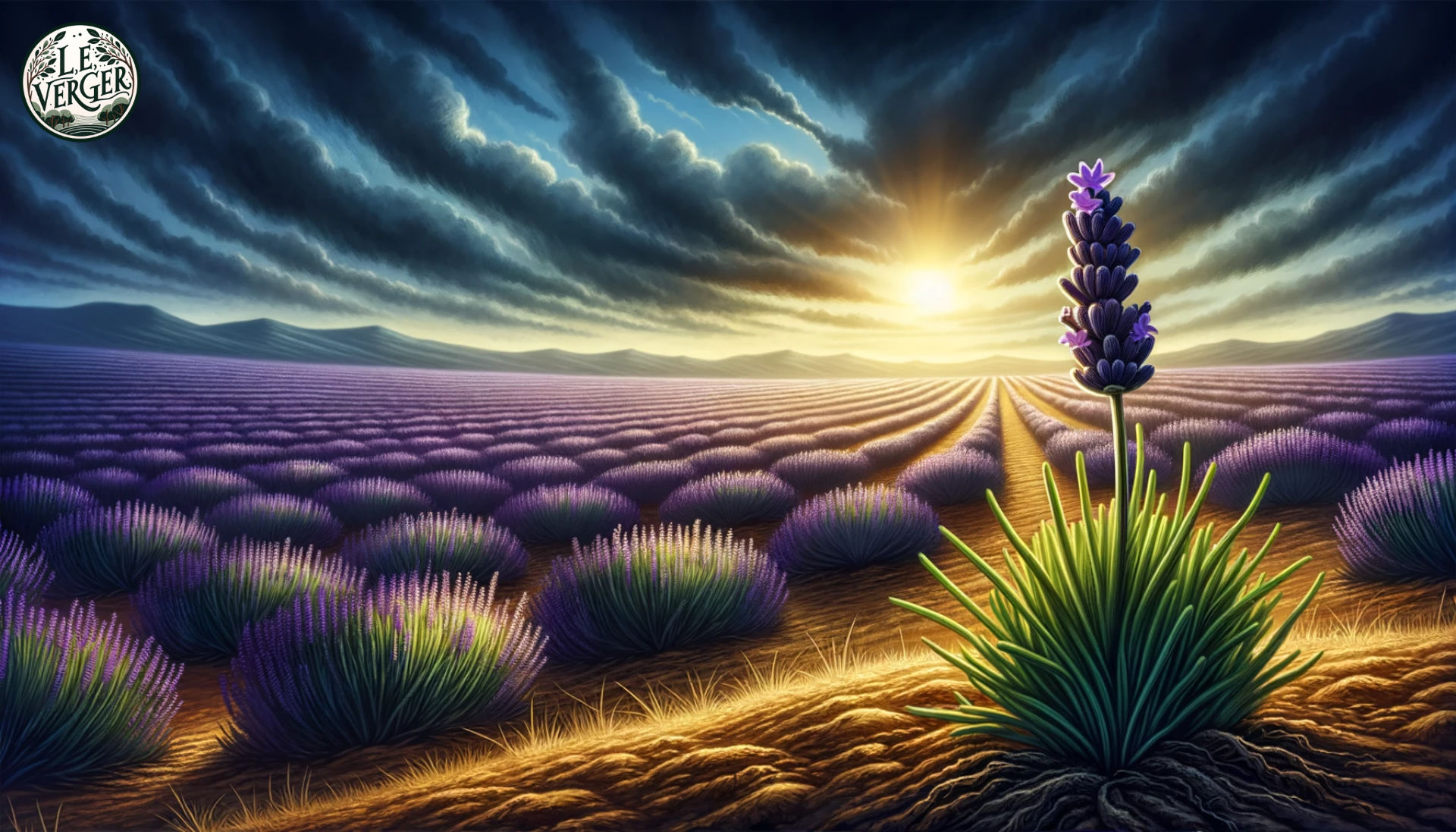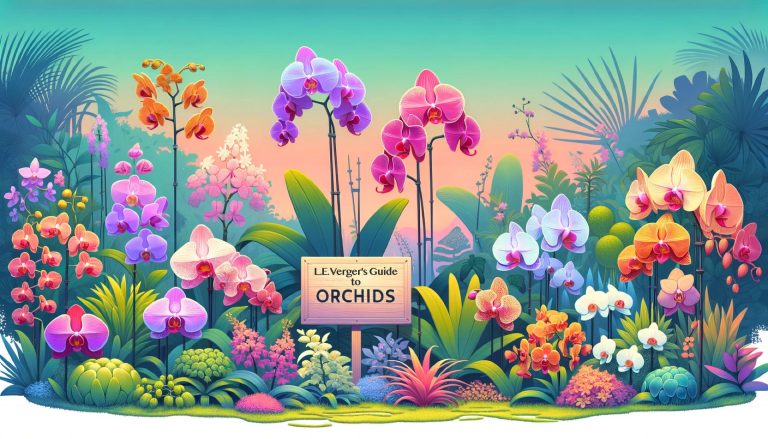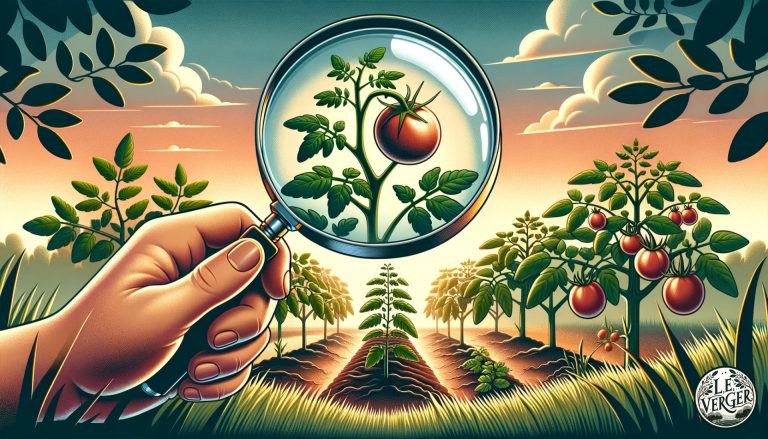The Hardy Hero: Unveiling the Resilience of Lavender
Looking to add a hardy hero to your garden? Our Lavender Plant Profile offers a deep dive into everything you need to know about this resilient and aromatic plant.
Lavender, often associated with fragrant gardens and soothing scents, is a remarkable plant that has earned its place as a symbol of resilience. In this exploration, we dive into the world of lavender, uncovering the secrets behind its hardiness and the numerous roles it plays in our lives.
You might be familiar with lavender’s enchanting aroma and its presence in aromatherapy, but there’s much more to this hardy hero than meets the eye. Lavender’s journey is not just a floral one; it’s a story of adaptation and endurance in the face of challenging conditions.
Join us as we embark on a journey through time and landscapes to unveil the remarkable resilience of lavender. From its ancient origins to its modern-day applications, lavender’s story is a testament to nature’s ability to thrive even in the harshest environments. Let’s take a closer look at how this humble plant has become a symbol of strength and serenity.
The Origins of Lavender
Our journey into the world of lavender begins with its fascinating origins. Lavender’s story traces back through the annals of history, revealing a plant cherished for millennia.
Ancient civilizations, including the Egyptians and Romans, recognized the value of lavender. It was used not only for its pleasant fragrance but also for its therapeutic properties. Lavender’s hardiness was apparent even then as it grew in the rocky soils of the Mediterranean region.
In those ancient times, lavender found its place in various aspects of life. It was used in perfumes, bath rituals, and medicinal remedies. Its versatility and ability to thrive in the harsh conditions of the Mediterranean made it a precious commodity.
III. The Tough Growing Conditions
Lavender’s resilience is not just a matter of historical significance; it’s deeply rooted in the challenging environments where it thrives. Understanding the tough growing conditions that lavender endures is key to appreciating its hardiness.
Lavender is known for its ability to thrive in dry, arid soils with excellent drainage. This adaptability to rocky, inhospitable terrain is a testament to its strength. It has the uncanny ability to conserve water and withstand prolonged periods of drought, making it a true survivor in the plant kingdom.
The harsh conditions of the Mediterranean, where lavender originally hails from, have played a significant role in shaping its resilience. The relentless sun, rocky soils, and low rainfall have forced lavender to evolve and develop its hardy characteristics.
Yet, lavender doesn’t just survive in these conditions; it thrives. Its silvery-grey foliage and vibrant purple blooms are a striking testament to its ability to conquer adversity. Lavender’s tenacity doesn’t end with its ability to withstand drought; it also faces challenges from pests and diseases with remarkable resistance.
IV. Lavender’s Healing Powers
Beyond its hardy nature, lavender possesses a wealth of healing powers that have captured the hearts of many. In this section, we’ll delve into the therapeutic properties that make lavender a true hero in wellness.
Lavender’s soothing fragrance is perhaps its most famous attribute. The aroma of lavender is known to have a calming effect on the mind, reducing stress and promoting relaxation. This fragrant herb has been used for centuries in aromatherapy to ease tension and induce a sense of tranquility.
The essential oil extracted from lavender is a versatile elixir. It’s renowned for its antiseptic and anti-inflammatory properties, making it a valuable addition to natural remedies. From soothing minor burns to alleviating headaches, lavender oil has found a place in our first-aid kits and beauty routines.
In the realm of sleep, lavender reigns supreme. Its gentle scent is often used to improve sleep quality and alleviate insomnia. A sprig of lavender under the pillow or a few drops of lavender oil on the bed linen can work wonders in promoting a peaceful night’s rest.
But lavender’s healing prowess extends beyond the realm of relaxation. It has been explored in scientific research for its potential in pain relief, skincare, and even as an aid in managing anxiety and depression.
V. Lavender in Literature and Culture
Lavender’s allure reaches far beyond its practical uses; it has woven itself into the tapestry of literature and culture. In this section, we’ll unravel the symbolic and cultural significance of this resilient herb.
Lavender’s fragrant blossoms and silvery leaves have long been associated with purity and devotion. In the language of flowers, lavender conveys messages of love and enchantment. In medieval times, it was often used in love potions and sachets to attract affection.
Literature and art have also embraced lavender’s beauty and symbolism. It has appeared in poetry, novels, and paintings as a symbol of elegance and refinement. Its presence in gardens has inspired artists to capture its vivid hues and delicate form on canvas.
Lavender has made its way into folklore and superstitions as well. In some cultures, it was believed to ward off evil spirits, and lavender wreaths were hung on doors for protection. Its fragrance was thought to bring good luck and prosperity.
This herb’s versatility extends to its cultural importance as well. Lavender festivals and celebrations are held in various parts of the world, where its vibrant blooms are showcased and appreciated.
VI. Modern Uses and Cultivation
Lavender’s journey through time has led it to find a special place in the modern world. In this section, we’ll explore how this resilient herb is not only a cultural icon but also a practical and versatile asset in various industries.
One of the most prevalent uses of lavender today is in the fragrance industry. Its sweet, calming aroma is a key ingredient in perfumes, scented candles, and room sprays. Lavender’s scent is synonymous with relaxation and serenity, making it a popular choice for creating tranquil atmospheres.
Beyond fragrance, lavender has found its way into the culinary world. Lavender-infused dishes and desserts have gained popularity for their unique flavour profile. From lavender-infused honey to lavender-flavored ice cream, this herb adds a touch of sophistication to the culinary arts.
Lavender’s role in personal care products cannot be understated. It is a common ingredient in skincare and bath products due to its soothing and antiseptic properties. Lavender-infused lotions, soaps, and bath salts are beloved for their ability to nurture the skin and calm the senses.
In agriculture, lavender has become a profitable crop. Its hardy nature and low water requirements make it an attractive option for farmers in various regions. Lavender farms have sprung up around the world, contributing to both local economies and the global demand for lavender products.
VII. Lavender Varieties and Their Resilience
Lavender comes in various shades and forms, each with its own tenacious spirit. From Lavandula x intermedia with its vibrant purple blooms to Lavandula lanata with its silver-grey foliage, these varieties showcase lavender’s adaptability and hardiness across a spectrum of climates.
One of the most well-known lavender varieties is Lavandula angustifolia, often referred to as English lavender. This variety is celebrated for its sweet fragrance and is commonly used in essential oil production. Its hardiness and adaptability have made it a favourite among gardeners worldwide.
Lavandula stoechas, or Spanish lavender is another notable variety. Recognizable by its distinctive “butterfly” flowers, this type of lavender exhibits a robust resilience to hot, dry climates. Its striking appearance and ability to flourish in harsh conditions make it a valuable addition to gardens in arid regions.
French lavender, Lavandula dentata, distinguishes itself with its serrated leaves and unique fragrance. It is often used in landscaping and as an ornamental plant due to its aesthetic appeal and ability to tolerate different soil types.
VIII. Lavender’s Role in Sustainability
Lavender’s resilience extends beyond its ability to endure tough growing conditions; it also plays a significant role in promoting sustainability and eco-friendliness.
One of lavender’s eco-friendly qualities is its minimal water requirements. This hardy herb can thrive with very little irrigation, making it a sustainable choice in regions where water conservation is crucial. Its ability to grow in dry climates without depleting precious water resources is a testament to its environmental responsibility.
Lavender also contributes to biodiversity and supports pollinators. Bees and butterflies are attracted to its vibrant blooms, providing essential pollination services for other plants in the ecosystem. Lavender farms often become havens for these beneficial insects, promoting a healthier environment.
Furthermore, lavender’s resistance to pests and diseases reduces the need for chemical pesticides. This natural resilience aligns with sustainable farming practices and organic cultivation methods, benefiting both the environment and human health.
The cultivation of lavender promotes sustainable agriculture in various regions, boosting local economies while maintaining a low environmental footprint. It’s a win-win scenario where the hardiness of lavender aligns with the principles of sustainability.
Join us as we delve into how lavender’s ecological contributions and sustainable qualities make it a vital player in the effort to protect our planet. Lavender’s resilience extends not only to its survival but also to its role as a responsible steward of the environment. Stay with us to learn more about Lavender’s green credentials.

IX. Lavender Beyond Borders
Lavender’s appeal knows no boundaries; it transcends borders and cultures, making it a beloved herb worldwide. In this section, we’ll explore how lavender has made its mark on the global stage.
From the lavender fields of Provence in France to the highlands of Bulgaria and the rolling hills of New Zealand, lavender has found a home in diverse climates and landscapes. Its adaptability and resilience have enabled it to flourish in countries far and wide.
Lavender cultivation has become an international phenomenon, with each region contributing its unique touch to this fragrant herb. The essential oils and products derived from lavender vary in aroma and composition, reflecting the terroir of the land where it’s grown.
Cultures around the world have embraced lavender for its aromatic, culinary, and therapeutic properties. In Japan, lavender gardens are celebrated for their beauty and tranquility, while in the United States, lavender festivals draw crowds to experience the charm of this resilient herb.
The global appreciation of lavender has not only expanded its reach but also created opportunities for trade and cultural exchange. Lavender’s journey beyond borders has led to a thriving international market for lavender products, benefiting both consumers and growers.
Join us as we traverse the continents to discover how lavender has become a global phenomenon, cherished by people from all walks of life. Lavender’s resilience knows no geographic limits, and its universal appeal continues to enchant and inspire. Stay with us to explore the worldwide journey of this hardy hero.
X. Conclusion
As we draw our exploration to a close, it’s evident that lavender is more than just a pretty plant with a pleasant scent; it’s a symbol of resilience in the natural world. From its ancient origins in the Mediterranean to its global presence today, lavender has weathered the harshest conditions and flourished.
Lavender’s journey through history, its role in culture and literature, and its modern-day applications all point to its unwavering strength. Its ability to thrive in challenging environments, support biodiversity, and promote sustainability make it a remarkable ambassador for nature’s resilience.
In gardens, fields, and homes around the world, lavender stands as a testament to the beauty that can emerge from adversity. Its fragrance soothes, its healing powers comfort, and its presence enriches our lives.
As we part ways with this hardy hero, let us remember the lesson it imparts: that even in the face of adversity, resilience blooms, and beauty endures. Let Lavender’s story inspire us to embrace our own resilience and appreciate the enduring grace of the natural world.







